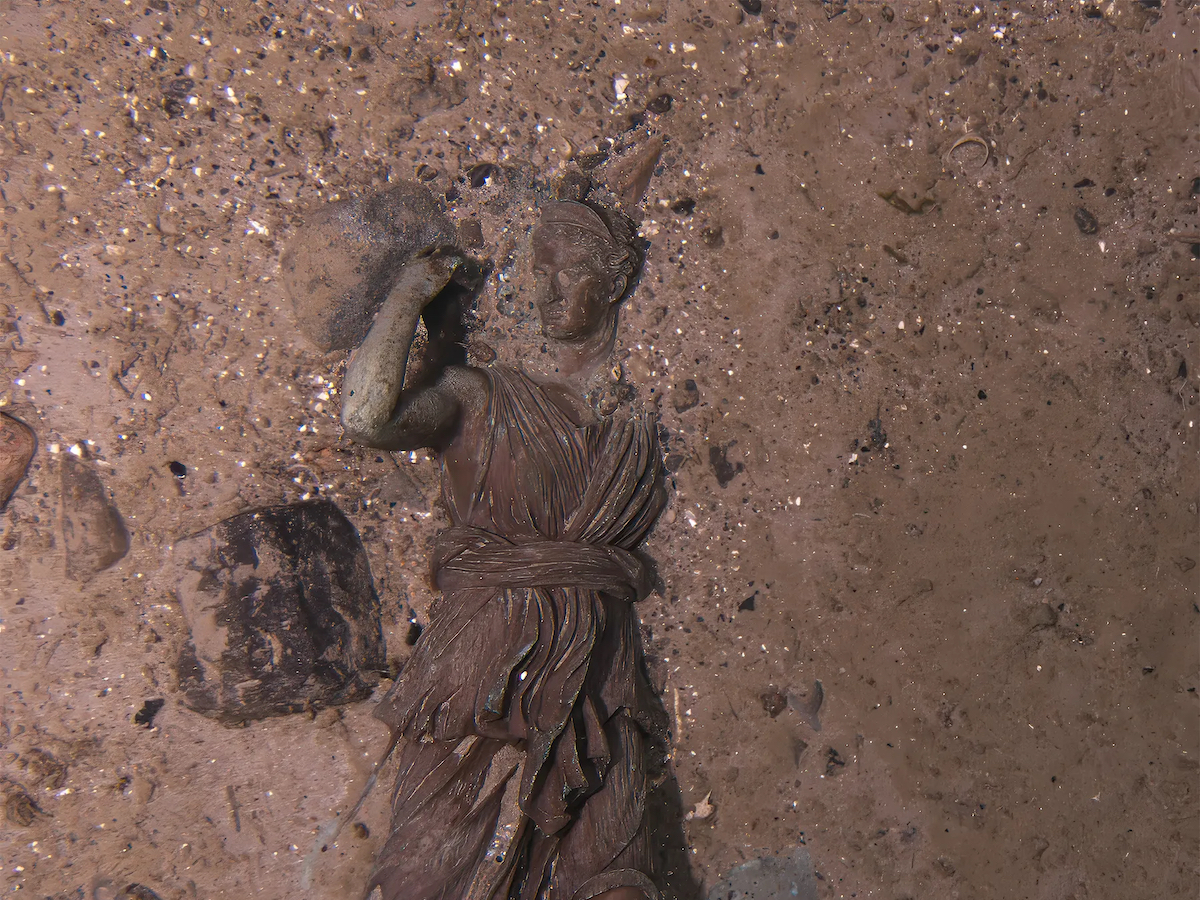In its first Titanic expedition in over a decade, a Georgia-based company with salvaging rights to the historic shipwreck located a long-lost statue while documenting the ship’s natural decay this summer. The statue in question, an intact two-foot-tall (~61 cm) opulent bronze replica of the Roman marble “Diana of Versailles” on view at the Musée du Louvre in Paris, was last photographed by an explorer in 1986 and was feared to be lost forever until RMS Titanic Inc. researchers came across it on the final day of the expedition.
The statue of Diana, whose maker and origin are unknown, was once held in the Titanic‘s First Class Lounge, which split as the ship began to sink. It was subsequently launched into a field of debris on the ocean floor, where it remained unseen for over seven decades until 1985, when two oceanographers discovered the shipwreck. One of them, Robert Ballard, returned to the site one year later to photograph the bronze statue.
RMS Titanic Inc. has completed nine expeditions to the Titanic wreckage since 1987, recovering thousands of artifacts and pieces of equipment as well as investigating and documenting its structure as it experiences natural reclaim. The penultimate expedition took place in 2010, yielding the most advanced imagery and digital representations of the wreckage available at the time.
The three-week expedition this summer began on July 12, with unmanned submersibles coursing the wreck and surrounding debris fields to pinpoint additional artifacts for future recovery, and to extensively document changes to the ship’s structure. The voyage comes one year after the Titan submersible implosion in June of 2023, which killed RMS Titanic Inc.’s director of underwater research, Paul-Henri Nargeolet.

Locating the statue of Diana was a priority for the RMS Titanic Inc. team, but researcher James Penca told NPR the bronze was “truly a needle in a haystack that is 2.5 miles underwater in pitch-black darkness.” Penca noted that the team discovered and photographed Diana during the last hour of the expedition, and that she will hopefully be recovered soon for all to enjoy — a far cry from when she was exclusively available to the upper-class Titanic passengers.
The victory of pinpointing Diana’s location was tempered by the wreck’s steady deterioration, laid bare in two million high-quality photos taken throughout the latest expedition. Most noticeably, a 15-foot stretch of railing along the left side of the ship’s iconic bow, which was attached as of 2022, has since fallen off the main wreckage.
However, ongoing deterioration may improve access to other parts of the wreck that haven’t been mapped out yet. RMS Titanic Inc. is reviewing its data to identify historically significant and at-risk artifacts to prioritize for recovery as it works to memorialize the wreck and its victims for future generations of scientific research and cultural appreciation.

